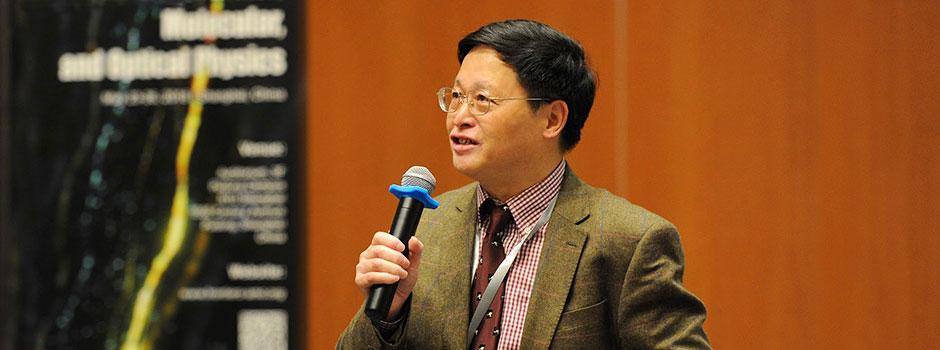In the quiet of the week after finals, world leading experts in atomic, molecular and optical physics congregated at NYU Shanghai for an exciting exchange of their research findings.
The conference, which took place on May 23-26, 2016, was sponsored by the NYU-ECNU Institute of Physics at NYU Shanghai, and the State Key Laboratory of Precision Spectroscopy, and attracted the participation of more than 150 researchers from China and abroad.

“There have been a lot of exciting results,” said Tim Byrnes, Assistant Professor of Physics at NYU Shanghai. “The conference had a broad selection of the most interesting developments in the field. In photonic technology, Prof. Jianwei Pan’s group is trying to establish long-distance quantum communication through both satellites and fibers. We also heard from many of the leaders in diamond-based technologies, which allows for magnetic resonance imaging (MRI) at the cellular level.”
Atoms, molecules, and light have been at the forefront of understanding quantum mechanics, since its discovery over 100 years ago. Since then, the field has progressed from understanding the most fundamental aspects of how particles behave under quantum mechanics to controlling individual atoms for creating new technologies.
In particular, quantum communication is included in China’s 13th Five-Year Plan (2016-20), as well as Shanghai’s strategic plan of building a global science and innovation hub. Some of the topics covered at the conference included cold atoms & cold molecules, ultrafast & precision spectroscopy, quantum manipulation & precision measurement, quantum computing & quantum communication, and quantum metrology.

Jorg Wrachtrup, Max Planck Fellow at the Max Planck Institute for Solid State Research, said he expects to learn new developments of quantum system and technology at the conference.
“Certainly, I am hoping for an update on the latest research results from a couple of groups across the world,” said Wrachtrup, who is an award-winning expert in the field of solid state quantum optics and spintronics.


